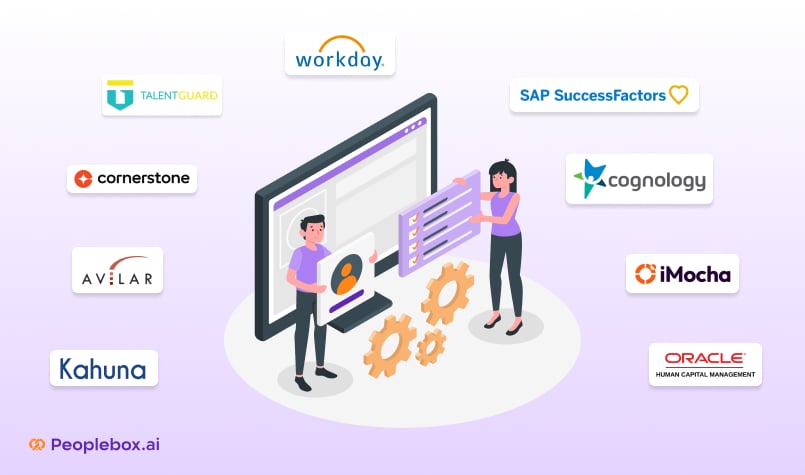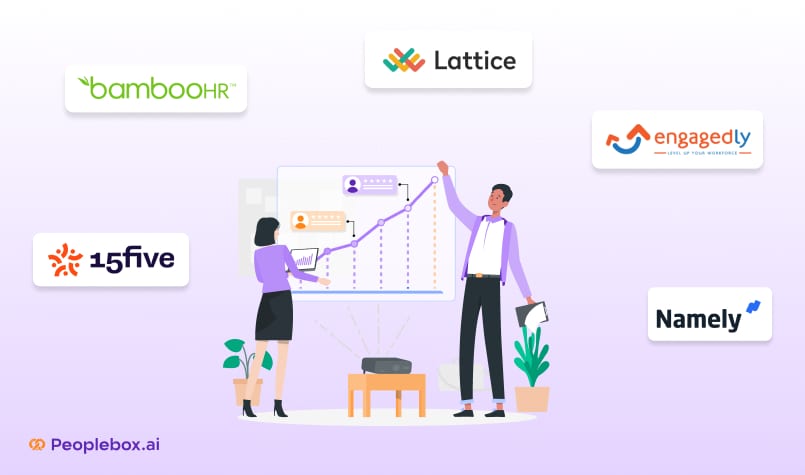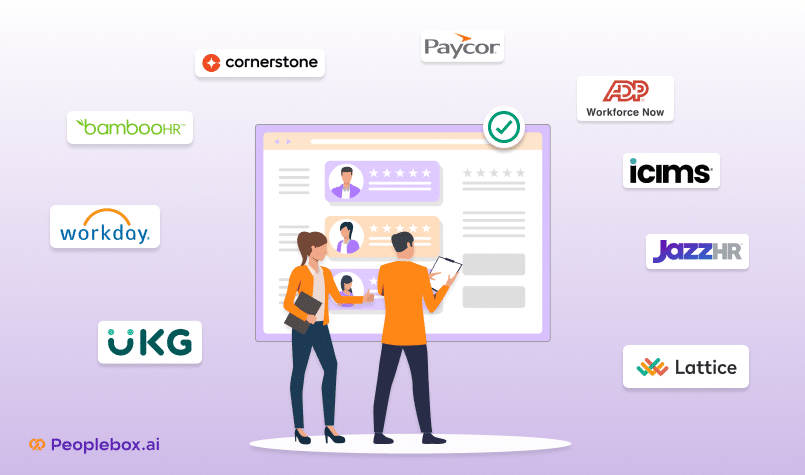RIF stands for “Reduction in Force.” It’s when a company needs to reduce its number of employees.
This can happen for different reasons:
- Financial troubles
- Changes in the business strategy
- Mergers or acquisitions
- New technologies making some jobs unnecessary
RIF is a way for a company to adjust its workforce to meet its current needs and budget.

RIF vs. Layoffs vs. Firings
RIF, layoffs, firings, and other types of separations differ based on the reasons they happen, whether they’re permanent, and whether employees get benefits.
| Type of Separation | Definition | Permanence | Reason | Employee Benefits |
| RIF (Reduction in Force) | Permanent job elimination due to structural or financial changes. | Permanent | Structural changes, financial constraints, strategy shifts. | Often includes severance, benefits continuation, outplacement services. |
| Layoffs | Temporary job suspension due to business downturns. | Temporary | Economic downturns, decreased demand. | May include some benefits; potential for rehire. |
| Dismissals / Firings | Termination of employment due to performance or misconduct. | Permanent | Employee performance or behaviour. | Typically no severance; may include final pay for accrued time. |
| Furloughs | Temporary unpaid leave during which employees are expected to return. | Temporary | Short-term economic challenges, budgetary constraints. | No pay during furlough, but benefits may be maintained. |
| Resignations | Voluntary termination initiated by the employee. | Permanent | Personal reasons, new job, retirement. | Typically no severance; includes pay for accrued time. |
Impact of RIF on Organisations
RIF can have financial, operational, and cultural effects on organisations:
- Financial Savings
The main purpose of an RIF is to reduce costs. By decreasing the number of employees, a company can save on salaries and benefits.
- Operational Efficiency
A RIF can make a company more efficient by eliminating unnecessary positions. It helps the company focus its resources more effectively.
- Employee Morale
A RIF can negatively affect the morale of remaining employees. They may feel insecure about their job security or overwhelmed by additional responsibilities.
This can decrease productivity and disrupt the workplace atmosphere.
- Reputation
The way a RIF is managed can influence how people view the company.
If handled poorly, it can lead to negative public perception and make it difficult to attract and retain top talent and customers.
- Legal and Compliance Risks
RIFs must comply with employment laws, including those that protect against discrimination.
Mishandling a RIF can lead to legal issues, which are costly and damaging to the company’s image.
- Long-term Growth
While a RIF might address immediate financial concerns, it can also hinder the company’s ability to grow in the future.
Losing skilled employees means losing valuable knowledge and innovative capacity.
Here’s how using people analytics software like Peoplebox can help you maximise the positive impact and minimise the negative.
Role of People Analytics in RIF
People Analytics helps make sure that workforce reductions are strategic, fair, and compliant. Here’s how:
Identifying Redundancies
People Analytics helps spot jobs or roles that are too similar and may not all be needed.
This helps the company decide which jobs can be cut without harming essential operations.
Ensuring Fairness
Using analytics helps make decisions based on objective data rather than subjective criteria. This helps protect the company from potential bias and discrimination claims.
Analytics can assess factors such as performance, skills, and tenure to decide fairly which roles should be eliminated.
Legal Compliance
Analytics can help ensure that the RIF process complies with employment laws and regulations.
By analysing demographic data, analytics can make sure the RIF doesn’t disproportionately affect any particular group of people, like those of a certain age, gender, ethnicity, or other protected characteristics.
Strategic Alignment
It helps make sure that the cuts support the company’s long-term goals.
It identifies which roles are critical for future growth and which skill sets the organisation should retain to remain competitive.
Post-RIF Analysis
After an RIF, analytics can check how the changes are affecting the company.
This includes monitoring employee engagement and morale, turnover rates, and the impact on productivity.
Legal Considerations
When a company plans a Reduction in Force (RIF), there are important legal considerations to keep in mind:
Avoiding Discrimination
The company must make sure the RIF is fair and doesn’t unfairly target specific groups of people, like based on their age, race, or gender.
Compliance with Laws
Ensure the RIF adheres to local, state, and federal employment laws.
For example, in the US, the Worker Adjustment and Retraining Notification (WARN) Act which requires employers to provide advance notice in cases of significant layoffs or closures.
Companies are usually advised to consult an employment lawyer to make sure RIF is done compliantly.
Now that you understand the legal considerations to keep in mind, let’s discuss how to plan and conduct an RIF.
Planning a Reduction in Force
Planning a reduction in force is complex and sensitive because it needs to achieve three important things at once:
- Meet the necessary organisational outcomes
- Maintain a positive work environment
- Ensure a strong company reputation in the long term
Here’s how to plan an RIF:
Collaboration with Business Leaders
Work closely with the top leaders when planning and doing a reduction in force.
This teamwork makes sure RIF fits with business goals and priorities.
For example, if a company is shifting its focus from manufacturing to digital services, HRs can work with business leaders to identify roles in manufacturing that might be reduced.
It is also advised to work with middle managers who handle everyday work. These leaders are likely to know where the company can save without losing quality.
Set Clear Goals:
Speaking with business leaders will help you be clear about why you’re doing the RIF.
Is it to save money, reshape the company, or react to changes in the economy?
Clear objectives will guide your decisions and help explain why the RIF is happening to everyone involved.
Choose the Right Time
While a reduction in force must occur when necessary, it’s important to strategically minimise operational disruptions.
Timing the RIF with the company’s business planning and financial cycles can provide strategic advantages.
For example, doing it at the end of the business year or quarterly financial period lets you better forecast and plan budgets more accurately with the new workforce costs.
This timing can also match when the business is slower, which minimises the operational impact.
Consult Legal and Financial Advisors
RIF can have significant legal and financial implications.
Getting help from lawyers early is crucial to follow employment laws, including the WARN Act in the U.S., which mandates advance notice in certain cases.
Financial experts can tell you how the RIF will affect things like severance pay and unemployment benefits.
Develop Criteria for Employee Selection
To be fair and transparent, set rules for deciding which jobs to cut.
These rules might include:
- Job function criticality: How important the job is to the company’s survival and growth
- Performance metrics: How well the employees are doing on their key goals and metrics
- Future skills needs: What skills you need in the future, to align with your long-term business goals
Use Data to Make Choices
After developing the criteria for employee selection, use data to check if an employee or job really meets these rules.
This should be based on quantifiable metrics, not just opinions.
Here, people analytics software can be of great help.
It brings together data from multiple sources so that you can easily check various aspects such as:
- Productivity levels
- Performance levels
- Financial impact of different departments and roles
Document everything
Document everything thoroughly, including:
- Initial planning meetings: Discussions and decisions made from the start
- The selection criteria of employees: The specific standards used to evaluate employees
- Assessment of Individual Employees/Roles: Detailed evidence and data showing how the selection criteria were applied to specific employees or roles
These records are crucial for compliance, auditing, and defending against potential legal challenges, such as claims of discrimination.
Develop Communication Strategy
Make a clear plan on how and when to tell employees and other stakeholders about the news.
It includes the following key steps:
i) Develop Key Messages
Create a core message that explains the reasons for RIF clearly and concisely.
Prepare to address the impact on remaining staff and the company’s future plans.
Ensure that the messaging respects the dignity and privacy of affected employees.
ii) Identify Stakeholders and Customise Messages
Tailor the messages for different stakeholders:
- Affected employees
- Remaining staff
- Executives
- Investors
Prepare managers by providing them with training and scripts to handle conversations sensitively.
iii) Channels of Communication
Decide on the channels through which messages will be conveyed.
E.g.:
- Personal meetings
- Emails
- Slack messages
Prioritise direct communication with affected employees to show respect and empathy.
Also, provide channels for feedback to address concerns and rumours.
iv) Timing and Sequence
Schedule communications carefully to control the flow of information and manage reactions.
Ensure that affected employees hear the news from their managers directly before a general announcement is made.
Handle Logistics
Make sure you handle final pay and benefits right and on time. Work with the payroll and benefits teams to make sure everything is correct.
This includes calculating final wages, including accrued vacation and any other compensations owed, in compliance with labour laws.
Also, work with IT and security teams to revoke access to company systems and buildings. This helps avoid potential disputes or security issues.
Support Departing Employees
Offer support to outgoing employees to help them with the transition.
Key ways to support the employees include:
- Severance pay: It provides them with financial support during the period they’ll be unemployed, as they look for a new job.
- Outplacement Services: Outplacement typically includes resume assistance, coaching for interviews, job search strategies, and sometimes access to job fairs or networking events.
- Career counselling: It provides a comprehensive approach to career development and transition. Counsellors work with individuals to understand their professional goals, skills, and interests. It also supports emotional and psychological well-being by addressing the stress and uncertainty that come with job loss.
Consider the Impact on Remaining Employees
RIF affects everyone, not just those who leave.
RIF can greatly hinder the morale and productivity of those who stay.
Follow-up communications and initiatives can help rebuild trust and engage remaining employees.
This might include:
- Open forums
- One-on-one check-ins
- Transparent discussions about the future of the company
- Communicating shifts in any role changes, duties, and expectations
Monitor and Adjust
Finally, as the RIF unfolds, continually assess the process and outcomes against your initial objectives.
Also use analytics to track organisational health, such as employee morale and productivity.
Be prepared to make adjustments as needed based on feedback from the data as well as stakeholders across all levels of the organisation.
Conclusion
Strategic, empathetic approaches to reductions in force are essential.
Use people analytics to make more informed, transparent, and fair choices.
Peoplebox offers a comprehensive people ops and people analytics platform that goes beyond just turnover rates. With Peoplebox, you can:
Gain insights into performance management through features like goal setting, performance reviews, and 360-degree feedback.
Leverage people analytics to identify trends, patterns, and potential problems in your workforce before they become critical issues.
For effective RIF management that aligns with both business goals and employee well-being, check out Peoplebox.







